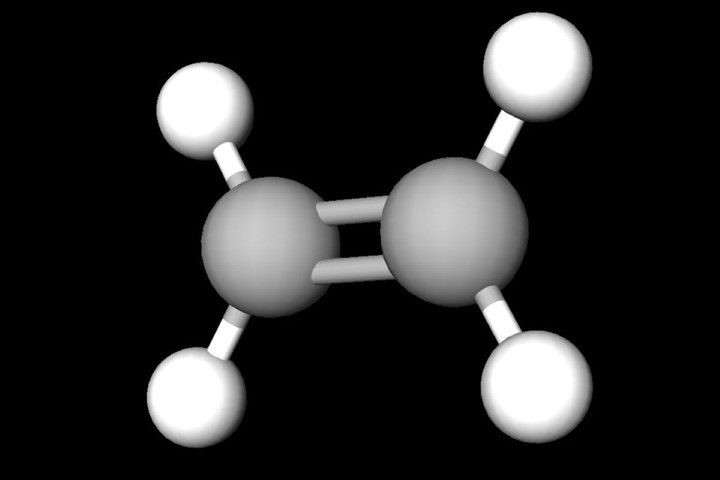Life Cycle Analysis Shows Pyrolysis Can Reduce Carbon Footprint of Cracking Operations
Research from Argonne National Laboratory describes greenhouse gas benefits of partially substituting pyrolysis oil for fossil fuels in the production of HDPE and LDPE.
A study published in , and supported by funding from the , describes greenhouse gas (GHG) benefits of substituting pyrolysis oil from post-use plastic for naphtha and fossil fuel gases in steam cracking operations.
The study considers two types of facilities, pioneer facilities with a capacity of less than 50,000 tons/year and “Nth” facilities, with capacity greater than 50,000 tons/year. The scaling factor is significant, the use of pyrolysis oil in pioneer facilities increases GHG emissions, while GHG emissions from Nth facilities are lower than that of conventional operations.

Cracking operations produce monomers for plastic production. In the United States, crackers are fed with an average of 6% naphtha and 94% gases. Substitution of naphtha with pyrolysis oil provides the greatest benefit in terms of GHG emissions. Photo Credit: National Library of Medicine
The study also considers two substitution ratios, 5% and 20%. When substituting only 5% pyrolysis oil for naphtha and gases, the elimination of chlorides and other contaminants by hydrotreatment is not necessary. Hydrotreatment contributes significantly to the GHG emissions of using pyrolysis oil. At a substitution ratio of 20%, hydrotreatment is necessary to protect equipment, bringing down the GHG benefit on a per kilogram basis.
From the recycler’s perspective, the substitution of pyrolysis oil provides a 23% reduction for HDPE production and an 18% reduction for LDPE production. However, these numbers set aside the 95% of production still being carried out by traditional means in this scenario. The producer still needs to source the other 95% (from fossil fuels) in order to make the 5% recycled material, so from the cracker’s perspective the benefit is around 1%.
Expanding the system boundaries to include end-of-life disposal increases the GHG benefit further, especially when compared against incineration.
The authors identified the availability of operational data on steam cracking and hydrotreatment processes as a limitation of the study. Detailed information is considered proprietary, and values were based on available literature and discussions with industry partners.
Related Content
-
NPE2024 Wrap-Up: Sustainability Dominates Show Floor News
Across all process types, sustainability was a big theme at NPE2024. But there was plenty to see in automation and artificial intelligence as well.
-
How to Extrusion Blow Mold PHA/PLA Blends
You need to pay attention to the inherent characteristics of biopolymers PHA/PLA materials when setting process parameters to realize better and more consistent outcomes.
-
Foam-Core Multilayer Blow Molding: How It’s Done
Learn here how to take advantage of new lightweighting and recycle utilization opportunities in consumer packaging, thanks to a collaboration of leaders in microcellular foaming and multilayer head design.





